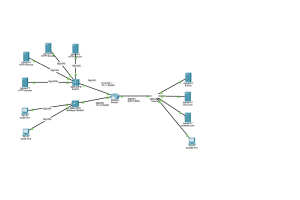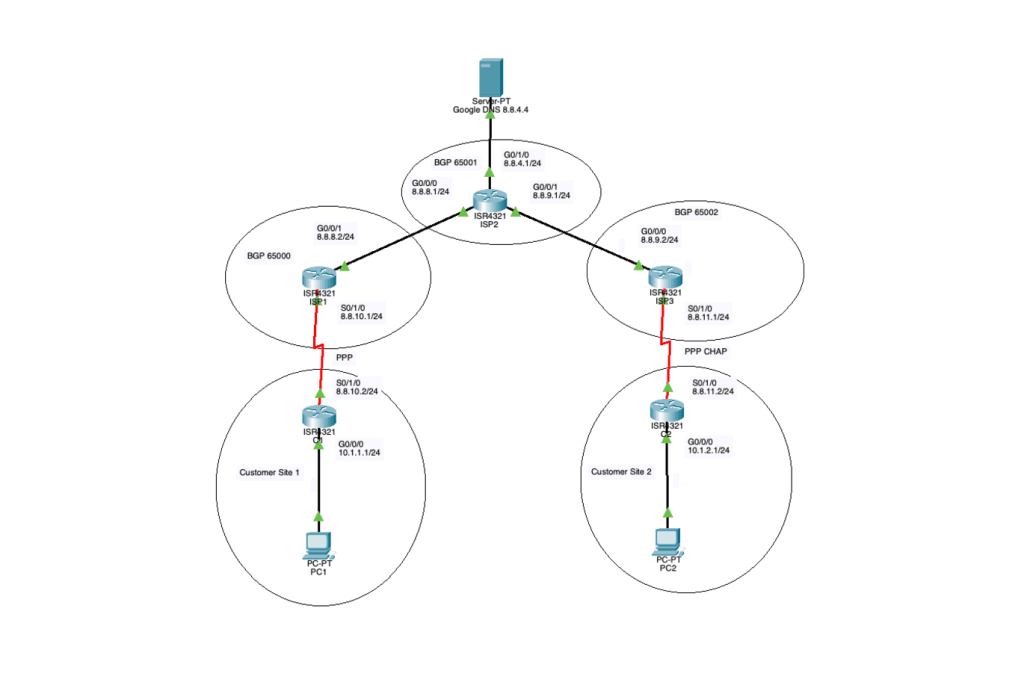
It is a protocol used for point-to-point access. It operates on the data link layer (layer 2). PPP can be encapsulated in a number of data link layer protocols, including Ethernet (PPPoE) and Asynchronous Transfer Mode (PPPoA).
PPP uses Link Control Protocol (LCP) that works on top of layer 1and it works by establishing, testing, and configuring the physical connection. It also negotiates other WAN options that are handled by the NCPs. LCP is also used to negotiate encapsulation parameters and other PPP configuration options such as authentication, error detection, and compression when the link has been established.
This is a type of PPP authentication, the remote router sends a challenge to a router that is trying to communicate. The router then responds with an encrypted username and password and if the parameters are correct, the remote router accepts the PPP connection.
For the lab, PPP protocol is used between ISP1 and Customer Site1, the Encapsulation is set to PPP for both routers, for the serial link between the routers.
ISP3 and Customer Site 2 use PPP CHAP, which requires the hostname of both routers for the authentication to work. On the Customer Site, the router username is the hostname of ISP3 and the password also matches the one on ISP3, the ISP3 router has the hostname of the Customer Site of the router, and the passwords also match.

This is a summary of my documentation of the lab.
The course can be found at Udemy by David Bombal